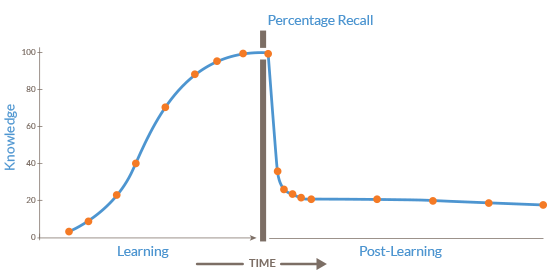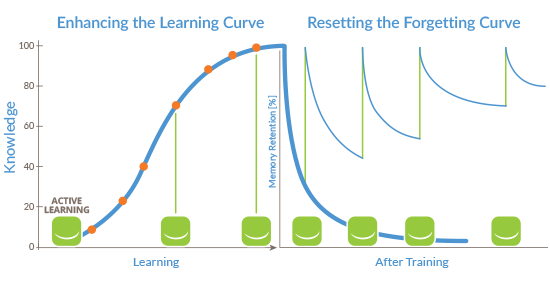How Do We Learn and Why Do We Forget?
WHAT THE MOST UP-TO-DATE RESEARCH TELLS US
Our memory consists of three major components:

Most of what enters our Sensory Memory (sights, sounds, etc.) is quickly forgotten, which is a good thing – otherwise our Working Memory would be quickly overloaded. What we do want to learn (remember) passes from Sensory to Working Memory.
Working Memory is critically important. It’s not only where we keep the important information we want to learn but it’s also where we process that information using a key component of Working Memory called the Central Executive.

But, Working Memory is limited. Today, most cognitive scientists think we can only keep 3-5 discrete bits of information at a time in Working Memory, and only for a few minutes. So, for long term retention we must transfer what we want to remember to Long Term Memory. This process is called encoding.
Long Term Memory is for all practical purposes infinite and it is possible to maintain these memories for our entire lifetime. But we forget what we don’t use (Storage Decay) and studies have shown that after a training event (even one in which learners pass a final exam) we will forget up to 90% of what we have learned.

HOW DOES INTELA™ HELP?
Nine proven active learning strategies
Decades of peer-reviewed research has demonstrated how to create learning that ensures that learning is encoded and then retained. Unfortunately many trainers and learners are either unaware of this research or ignore it, perhaps because an easy-to-use system that harnesses this research did not exist – until now.
The key is to use Active Learning techniques that require learners to retrieve information from Long Term Memory, process it in Working Memory using the Central Executive and then re-encode it back into Long Term Memory. Using these techniques it is possible to modify the forgetting curve so it looks like this:

The cognitive scientists at Intela™ have spent years following this research literature and have selected nine proven Active Learning strategies:
Testing Effect
Spacing Effect
Successive Relearning
Interleaving
Gamification
Microlearning
Subscription Learning
Priming
Cumulative Testing
and synthesized them into a single product.
We have created Learning Activities incorporating these strategies for you to use before, during and after training events.
Intela™ is the only product available that incorporates all of these learning strategies into a single system.
WHY IT WORKS
The Intela™ Personalized Microlearning Platform is based on decades of solid research into the nature of learning and long term retention. We know that after a traditional training event, whether instructor-led, eLearning or blended, within a few weeks most participants will forget up to 80% of what they have learned.
![]()
Knowledge lost cannot be applied on the job, resulting in little training transfer and business impact. But we also know that by using research-based cognitive techniques we can turn learning from an event into a process and foster long term knowledge retention.
